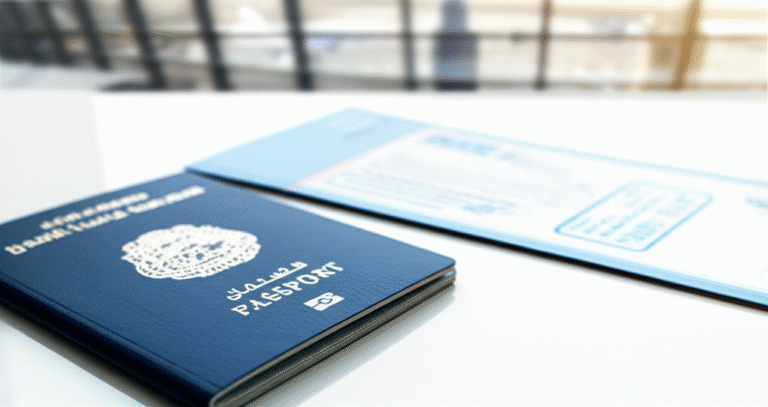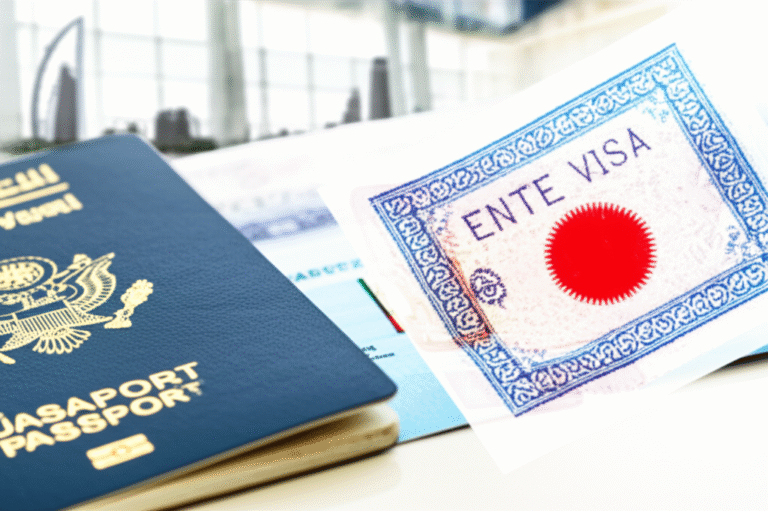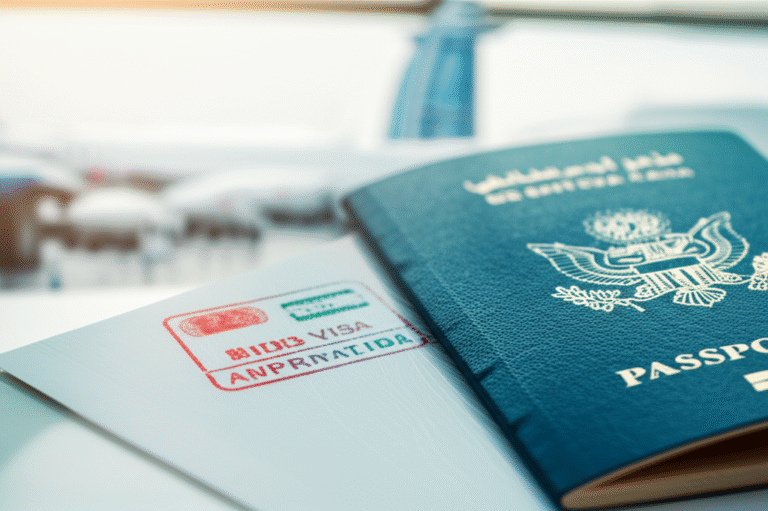How to Apply for Dubai Transit Visa Online
Applying for a Dubai transit visa online is straightforward and efficient. This guide simplifies the entire process, ensuring you can secure your short-term visitor visa smoothly for your layover in Dubai, thanks to Dubai’s innovative digital services.
Key Takeaways
- Understand eligibility and required documents for transit visas.
- Discover the primary channels for online transit visa applications.
- Learn the step-by-step online application process.
- Prepare for potential fees and processing times.
- Get answers to common transit visa questions.
Dubai, a hub where the world connects, often serves as a brief stopover for many travelers. If your journey involves a layover in this magnificent city, you might need a transit visa. Navigating visa applications can sometimes feel complex, but Dubai’s commitment to digital transformation, particularly within its public services, makes processes like applying for a Dubai transit visa online surprisingly manageable. We’re here to guide you through every step, ensuring your transition through Dubai is as seamless as possible. Let’s uncover how to apply for your Dubai transit visa online with confidence.
Understanding Dubai Transit Visas: Do You Need One?
A transit visa is essential if your layover in Dubai exceeds the duration allowed without a visa, typically if you have a significant connecting flight or wish to briefly explore the city. Dubai offers several transit visa options, primarily for 48 or 96 hours, designed to facilitate short stays for travelers passing through. The need for a transit visa depends on your nationality and the length of your layover.
Many nationalities benefit from visa-on-arrival or visa-free entry for short stays. However, if your passport isn’t on these lists, or your layover is longer than permitted for visa-free transit, an application is necessary. The most convenient way to handle this is often through online channels, simplifying the initial stages of your travel planning.
Transit Visa Eligibility Criteria
To apply for a Dubai transit visa, you generally need to meet a few key requirements. These are designed to ensure that the visa is used for its intended purpose – transit. Key criteria include:
- Valid Passport: Your passport must be valid for at least six months from your date of entry into the UAE.
- Confirmed Onward Ticket: You must have a confirmed flight ticket to your final destination. This is a crucial piece of evidence for the transit visa.
- Flight Connection: Your layover duration in Dubai must align with the transit visa validity (48 or 96 hours).
- Nationality: While many nationalities can apply, specific rules may apply. It’s always best to check the latest regulations for your country.
Types of Dubai Transit Visas
Dubai primarily offers two types of transit visas, catering to different layover durations:
- 48-Hour Transit Visa: This visa is ideal for shorter layovers. You must enter and exit the UAE within 48 hours of your arrival.
- 96-Hour Transit Visa: This allows for a longer stopover, up to 96 hours. It’s perfect if you have a more extended layover or wish to spend a few days exploring Dubai.
Both these visa types are typically applied for online, simplifying the process significantly for travelers.
How to Apply for Dubai Transit Visa Online: Your Step-by-Step Guide
Applying for a Dubai transit visa online has become a streamlined process, thanks to the UAE’s advanced digital infrastructure. The primary method involves applying through the airline you are flying with, or through the General Directorate of Residency and Foreigners Affairs (GDRFA) portal. Dubai’s vision for smart government services means you can often complete most of the process from the comfort of your home.
Step 1: Determine Your Eligibility and Visa Type
Before you begin an application, confirm if you indeed need a transit visa. Check the official General Directorate of Residency and Foreigners Affairs (GDRFA) website and the entry requirements for your nationality. Decide whether a 48-hour or 96-hour transit visa best suits your travel plans. This initial step saves you time and effort.
Step 2: Choose Your Application Channel
There are two main avenues for applying online:
- Through Your Airline: Many major airlines that fly through Dubai, such as Emirates, Etihad, and others, offer visa application services to their passengers. This is often the most convenient option as they can assist in processing your visa in conjunction with your flight booking. Look for a ‘Visa’ or ‘Manage Booking’ section on your airline’s website.
- Through the GDRFA Portal: The official government portal allows direct applications. You might need to create an account to access the services. This is a reliable and official channel for all immigration-related matters in Dubai.
Step 3: Gather Required Documents
Having your documents ready is crucial for a smooth online application. You will typically need:
- A scanned copy of your passport’s main page (ensure it has at least six months of validity).
- A scanned copy of your confirmed onward flight ticket from Dubai.
- A recent passport-sized photograph meeting UAE visa photo specifications (usually white background, clear face).
- A scanned copy of your entry visa for your final destination country, if applicable.
Step 4: Complete the Online Application Form
Whichever channel you choose, you will be directed to an online application form. Fill this out accurately and thoroughly. Common fields include:
- Personal details (name, date of birth, nationality).
- Passport information (number, issue date, expiry date).
- Flight details (flight numbers, arrival and departure times).
- Contact information.
- Uploads for your passport copy, photo, and onward ticket.
Pro Tip: Double-check all entered information for typos. Even a single incorrect character can cause delays or rejection. Ensure all uploaded documents are clear and legible.
Step 5: Pay the Visa Fee
Once you submit the application, you will be prompted to pay the visa fee. The cost varies depending on the visa type and the service provider (airline vs. GDRFA). Payments are typically made online using a credit or debit card. Keep a record of your transaction for future reference.
Step 6: Track Your Application and Receive Visa
After payment, your application will be processed. Some channels provide an application tracking number. Processing times can vary, but for transit visas, it’s usually relatively quick, often within a few business days. Once approved, your electronic visa will be sent to your email address. You should then print this visa and carry it with you during your travels.
Visa Application Channels and Their Features
Understanding the nuances of each application channel can help you choose the most suitable one. Dubai’s commitment to digital services means these channels are designed for user convenience.
| Channel | Pros | Cons | Best For |
|---|---|---|---|
| Airline Online Portal (e.g., Emirates, Etihad) | Conveniently integrated with flight booking. Often handles the visa process seamlessly. Airline customer support may assist. | May have slight variations in fees or processing times compared to official channels. Limited to passengers flying with that specific airline. | Travelers who have booked their flights with an airline offering this service. |
| GDRFA Official Portal | Direct official channel, ensuring accuracy and adherence to government regulations. Potentially offers all visa types. Clear process for all applicants. | May require creating a separate account. Navigation might be slightly more technical for some users compared to airline portals. | Travelers who prefer using a direct government service or whose airline does not offer visa assistance. |
Fees and Processing Times for Dubai Transit Visas
The financial commitment and waiting period are crucial aspects of visa planning. Dubai’s transit visa fees are generally affordable, reflecting the short duration of stay they permit. Processing times are designed to be efficient, aligning with the fast-paced nature of air travel.
Estimated Visa Fees
The exact fees can fluctuate due to currency exchange rates, service charges, and potential government policy updates. However, as a general guideline:
- 48-Hour Transit Visa: Might range from approximately AED 50 to AED 200 (around $15 to $55 USD).
- 96-Hour Transit Visa: Could range from approximately AED 150 to AED 400 (around $40 to $110 USD).
These figures are indicative. Always check the current fee structure on the official application portal or your airline’s website when you apply.
Typical Processing Times
Dubai’s government services are known for their efficiency. For transit visas, you can typically expect:
- Standard Processing: Usually within 1-3 working days.
- Expedited Processing: In some urgent cases, expedited services might be available for an additional fee, potentially yielding results within 24 hours.
It is always advisable to apply at least 5-7 days before your intended travel date to allow for any unforeseen delays and to ensure you receive your visa on time.
Important Considerations for Your Dubai Transit
Beyond the application itself, a few practical points can enhance your transit experience. Dubai’s infrastructure and safety standards are among the highest globally, ensuring your brief stay is comfortable and secure.
Arrival and Immigration at Dubai Airport
Upon arrival, you will proceed to the immigration counters. Have your passport and the printed copy of your transit visa ready. Immigration officers will review your documents and may ask about the purpose of your visit. If you have a 96-hour visa and plan to exit the airport, ensure you have arranged onward transportation and accommodation if needed.
Staying Connected and Mobile
Dubai offers excellent connectivity. You can purchase local SIM cards at the airport or in the city for easy communication and internet access. Many public areas and cafes also offer free Wi-Fi, ensuring you stay connected even on a short layover.
Currency and Payments
The local currency is the UAE Dirham (AED). Credit and debit cards are widely accepted across Dubai, from hotels and restaurants to shops. However, it’s useful to have some cash for smaller purchases or local transport.
Customs Regulations
Be aware of Dubai’s customs regulations. Prohibited items include narcotics, firearms (without proper permits), and certain literature. If you are unsure about any item, declare it. Dubai Customs operates with efficiency and fairness.
Leveraging Dubai’s Smart Government Initiatives
Dubai’s vision for a smart city extends to its government services, including visa processing. The General Directorate of Residency and Foreigners Affairs (GDRFA) Dubai is at the forefront of this digital transformation. Their online portals and apps are designed to offer a seamless experience, mirroring Dubai’s commitment to innovation and customer-centricity.
These smart government initiatives mean that applying for a Dubai transit visa online is not just a convenience but a reflection of Dubai’s forward-thinking approach to public administration. By utilizing these digital platforms, you are engaging with a system that prioritizes speed, accuracy, and ease of use, allowing you to focus more on your travel plans and less on bureaucratic hurdles.
Frequently Asked Questions (FAQs) about Dubai Transit Visas
Q1: Can I apply for a Dubai transit visa on arrival?
A1: While some nationalities are eligible for visa-on-arrival or visa-free transit, a dedicated transit visa generally needs to be applied for in advance online, especially if you do not qualify for visa-free entry or have a layover exceeding the standard transit allowance.
Q2: How long does it take to get a response after applying for a Dubai transit visa online?
A2: Processing times typically range from 1 to 3 working days for standard applications. It’s always best to apply several days before your planned travel to account for any potential delays.
Q3: What if my transit visa is rejected?
A3: Visa rejections can occur due to incomplete applications, incorrect documentation, or other reasons. If rejected, review the reasons provided, correct any issues, and consider reapplying or contacting customer support for clarification.
Q4: Can I extend my 48-hour or 96-hour transit visa?
A4: Transit visas are generally not extendable as they are specifically for short layovers. If you wish to stay longer, you would need to apply for a different type of visa, such as a tourist visa.
Q5: Do I need to print my e-visa?
A5: Yes, it is highly recommended to print your e-visa. While digital copies might be accepted in some instances, carrying a physical copy ensures a smooth process at immigration and can be a backup in case of technological issues.
Q6: Can I apply for a transit visa if I am not flying with Emirates or Etihad?
A6: Yes, if your airline does not offer direct visa services, you can apply through the official GDRFA portal or another authorized visa processing service. Always ensure you are using a legitimate channel.
Conclusion
Navigating the process of obtaining a Dubai transit visa online is now more accessible than ever, thanks to the UAE’s progressive digital services. By understanding the requirements, choosing the right application channel, and preparing your documents, you can efficiently secure your visa and look forward to a smooth transition through Dubai. Whether you’re using your layover as a brief gateway to explore the city or simply waiting for your next flight, a well-planned transit visa application ensures your journey is comfortable and compliant.




